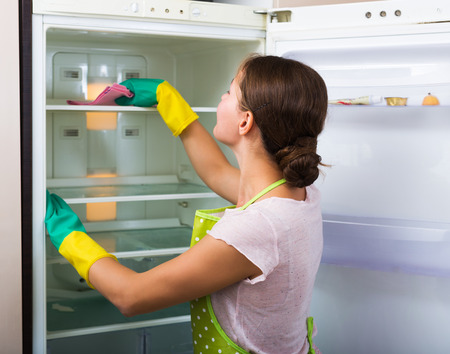
Cleaning your home probably isn’t your favorite way to spend the weekend, but it’s important to do a deep clean of your home’s main hang-out areas, like the kitchen, at least once a month. But, a simple wipe down of the countertops won’t do it. One place that tends to get over-looked during your weekly sweep and dust is your kitchen appliances. Can you remember the last time you gave your microwave a good wipe down inside and out?
SpongeOutlet.com is here with some tips for cleaning your kitchen appliances.
No matter what type of appliances you have, new, old or stainless steel, we’ll help you get them sparkling clean in no time!
Ice Maker
Whether you have the typical ice cube trays or a more sophisticated built-in version, your ice maker needs to be cleaned about once a month. When it doesn’t get proper care, it can foster an unsanitary environment, leading to germ growth and potential health risks.
If you have a fridge and freezer with an ice machine built into the freezer door, the manufacturer probably has a cleaning solution that can be used to safely clean the icemaker. If you no longer have your owner’s manual, check online for their recommendations.
To get started, unplug your fridge and transfer any sensitive items to your secondary refrigerator. Wipe down the ice drawers with mild soap and warm water, and thoroughly dry the area with a towel before you close the door.
- If your freezer and ice maker has a filter, change or wash it. Then, de-clog any chutes that may have built up excess water by using a warm, damp cloth to melt the built-up ice.
Check the filter behind your fridge, and if it needs to be dusted, take care of that before you plug it back in and slide it back where it belongs.
Fridge & Freezer
While you’re working on your ice maker, don’t forget to clean your fridge and freezer. After time, food spills and crumbs on the shelves can cause odor, mold growth, and an unpleasant look. Remove everything from the fridge and freezer, and use a warm, damp cloth with a mild soap to remove any built-up food items. Some fridges and freezers may have removable doors that you can pop in your dishwasher.
- Don’t overlook the vegetable drawers: those areas tend to get messy the fastest and may need a wipe-down once a week!
Blender & Mixer
If you use your blender regularly, you know that the blades can be tricky to clean, but it’s important to clean them thoroughly—otherwise, food particles will remain there and cause mold growth. You wouldn’t want that to end up in your next smoothie or milkshake!
If your blades are machine washable, give them a scrub with a small kitchen appliance brush, and pop them in the dishwasher. Make sure you check under the blades and under the center piece to make sure all the food from this morning’s protein shake is removed.
Coffeemaker
RealSimple.com says that your coffee maker is just as important to clean regularly as your favorite mug. Follow the instructions for cleaning and rebalancing in your owner’s manual. Start by removing and washing the filter and the carafe—if you have a reusable filter, avoid using soap but rinse the filter thoroughly.
- Brew a pot of 2-3 cups water, with equal parts white vinegar to clean out the innards of the coffee maker. You may need to repeat this step a few times. Turn the machine off about halfway through the cycle to let it sit, and then turn it back on.
After your vinegar brew, brew 2 pots of regular water to remove any vinegar deposits. And, don’t forget to show the outside of the coffee maker some love with a good wipe down with soap and water.
https://www.youtube.com/watch?v=o5PqTrZHWbM#action=share
Dishwasher
First, remove the racks and drawers from your dishwasher. Clean the interior with warm soapy water and a soft cloth. Run an empty cycle with the detergent cup full of vinegar or powdered lemonade mix to remove stains.
Microwave
To give your cruddy microwave a makeover, microwave a large bowl of water with slices of lemons until the water boils. Remove stains with a soft damp cloth and soapy water. Remove the tray and wash with hot water and dish soap or run it in your newly cleaned dishwasher.
Toaster
HouseLogic.com says to start by unplugging your toaster. Remove and wash the crumb catcher, making sure it’s completely dry before replacing it. Shake the machine upside down over the sink to dislodge loose crumbs.
Oven
Most ovens have a self-cleaning option: while that runs, remove the grates from the stovetop and stick them in the sink. Fill the sink with hot water and dish soap and let the grates soak to remove stubborn cooked on food. Replace drip plates that have seen better days, and clean everywhere: including under the top of the stove. You can use your vacuum cleaner to remove hard to reach crumbs.
Pick up all the supplies you need to give your kitchen appliances a deep clean at SpongeOutlet.com. Our eraser sponges can help you remove tough stains and stubborn baked-on gunk. For more cleaning tips, check out our blog often!

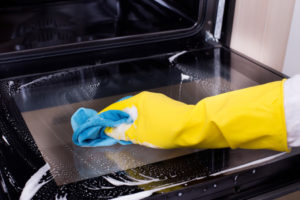
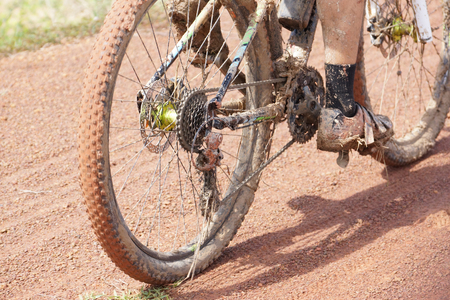
 Step Two: Clean Your Bike Chain
Step Two: Clean Your Bike Chain For more tips on cleaning items around your car, office and home,
For more tips on cleaning items around your car, office and home, 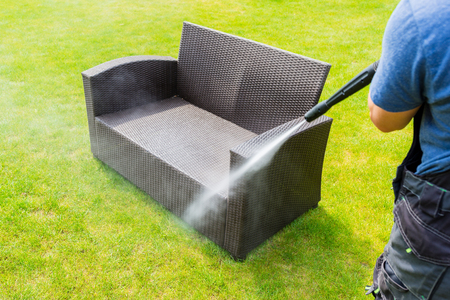

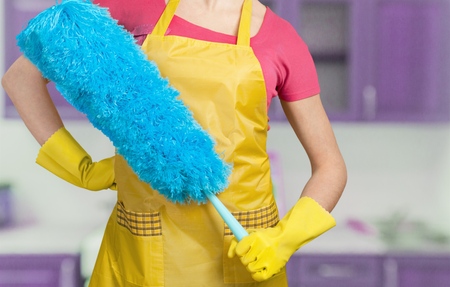
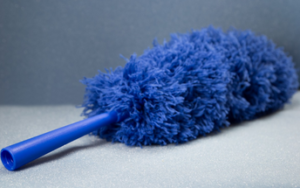 Must-Know Dusting Advice: Choose your Tools
Must-Know Dusting Advice: Choose your Tools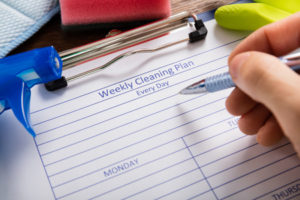 Must-Know Dusting Advice: Frequent Repeats
Must-Know Dusting Advice: Frequent Repeats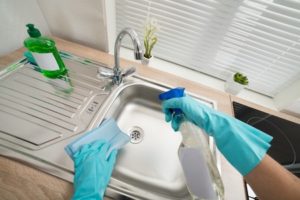 Disinfect the Kitchen
Disinfect the Kitchen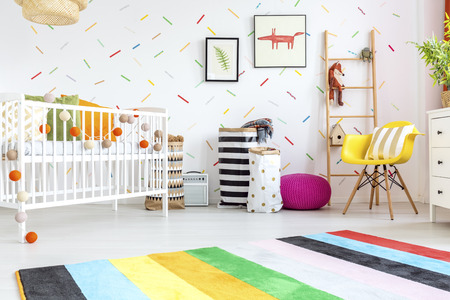
 Clean the Car Before Taking Your Baby Home
Clean the Car Before Taking Your Baby Home Clean all Linens Before Baby Arrives
Clean all Linens Before Baby Arrives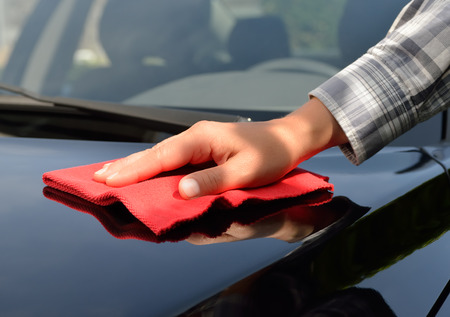
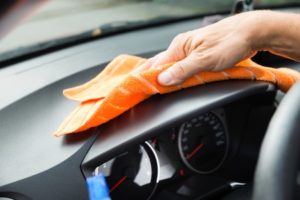
 Wash Your Bedding After Getting Sick
Wash Your Bedding After Getting Sick
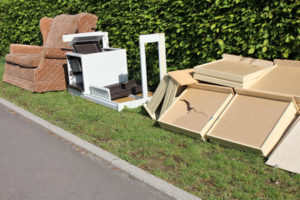 Most people use their basement as a storage space, and if you’ve lived in your home for a while, chances are there are tons of random items piled up down there. Take your time and sort through all of your belongings. Open every box and bin, and make sure you take a good inventory of what you have.
Most people use their basement as a storage space, and if you’ve lived in your home for a while, chances are there are tons of random items piled up down there. Take your time and sort through all of your belongings. Open every box and bin, and make sure you take a good inventory of what you have.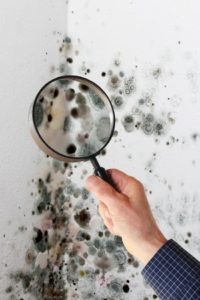 Get Rid of the Musty Smell in Your Basement
Get Rid of the Musty Smell in Your Basement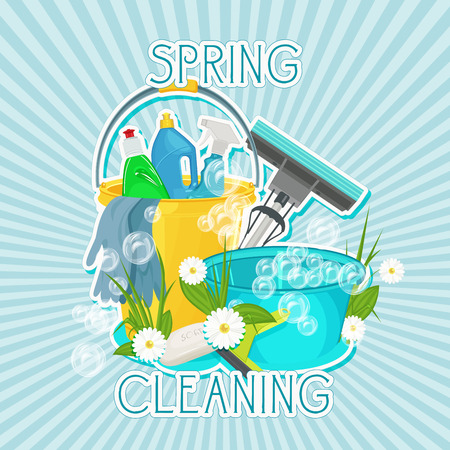
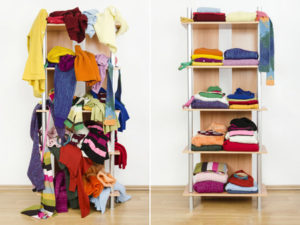 The best thing to do first when spring cleaning is to de-clutter. Take everything out of your closets, first. Get rid of winter clothing that you didn’t wear this season or last season, and pare down by getting rid of anything you don’t love anymore. Make sure you donate clothing that’s still in good shape to your local Good Will or charity.
The best thing to do first when spring cleaning is to de-clutter. Take everything out of your closets, first. Get rid of winter clothing that you didn’t wear this season or last season, and pare down by getting rid of anything you don’t love anymore. Make sure you donate clothing that’s still in good shape to your local Good Will or charity. Take it one room at a time in the interior of your home, and plan to split this process up over a few days; getting everything done all at once won’t work!
Take it one room at a time in the interior of your home, and plan to split this process up over a few days; getting everything done all at once won’t work!